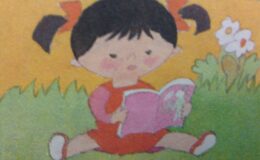The 5 Sleeping Positions of Children, Hinting at Different Grown-up “Personalities”: If It’s the Third Type, Congratulations!
- By : Jessica Jiayi W
A mother says her child sleeps exceptionally well. So, have you observed your child’s sleeping position?Is there a difference?
Early education experts believe that different sleeping positions can reveal a child’s personality.
First type, the hedonistic sleeping position
When sleeping, one leg is stretched out straight, and the other is bent. This sleeping position looks quite comfortable and at ease.
Such children tend to be exceptionally popular when interacting with others. However, they might operate at a slower pace, valuing the process of doing things over the outcome, focusing on whether they are enjoying themselves and feeling happy.
If parents can respect their child’s pace, they are sure to lead a beautiful life, with a happy family and continuous progress in their work!
Second type, the curled-up cutie
Children who sleep curled up in a ball. They lack a sense of security and have a high dependency on their mothers, making them more sensitive in personality.
High-need children, when interacting with others, tend to worry more than others, being very considerate of others’ feelings. In learning and work, they are more serious and responsible when thinking.
After arranging their work, parents should spend more time with their children. High-quality companionship can ensure children feel secure, reducing anxiety and making them easier to manage.
In the process of raising children, identifying their unique traits and catering to their needs can warm their hearts, leading to a healthier psychological state.
When children’s needs are met, they are less likely to throw tantrums or act out without reason. A child with stable and happy emotions makes everyone’s life easier.
Third type, the optimistic starfish
The sleeping position is sprawled out, lying on the back with arms and legs stretched out freely.
From a psychological perspective, only children with a relatively high sense of security adopt such a sleeping position.
These children are optimistic and cheerful, with strong communication skills. They face all difficulties positively, smiling through all life’s pressures and troubles. They have excellent relationships with family members and strong emotional control.
An optimistic personality makes the upbringing process easier for parents, who have higher expectations for their child’s growth in social interactions.
Fourth type, the disciplined soldier
The body is kept in a straight line, with both hands placed neatly at the sides.
These children have stronger self-esteem and are competitive, principled, and unyielding. As they grow, their disciplined nature earns them the respect of leaders and the affection of teachers.
However, parents should also focus on cultivating their child’s independent thinking ability. This way, they can respect the bigger picture while having their own thoughts and improving. They can be good employees who follow leadership and stand out when needed, achieving a brilliant life and becoming true winners.
Fifth type, the lively tummy sleeper
Can’t stay still even in sleep? Some children roll around the bed, and sometimes, they even roll onto the floor.
Sometimes, when adults rest, they wake up to find the child has rolled onto the floor or between two beds.
Personality-wise, these children are more lively and active.
From a health perspective, these children’s spleen and stomach functions need adjustment.
Traditional Chinese medicine says: When the stomach is not in harmony, one cannot rest peacefully.
When children have weak spleen and stomach functions, they move around in sleep, and some even sleep with their eyes wide open.
How to solve this? You can rub the belly downwards, as if playing a game with the child, using warm hands to gently push, which can unblock the meridians.
A child’s health determines the happiness index!
A child’s personality determines the heights of life!
What kind of sleeping position does your child have?
What new traits have you discovered from this?


